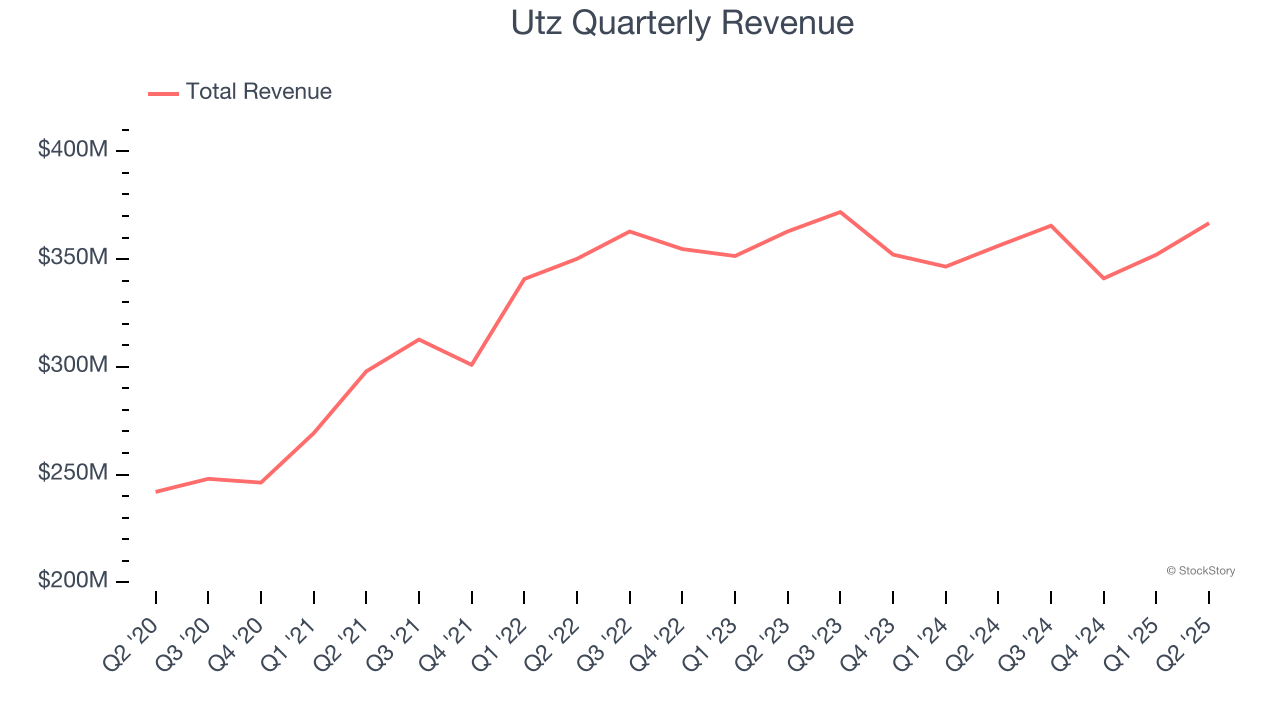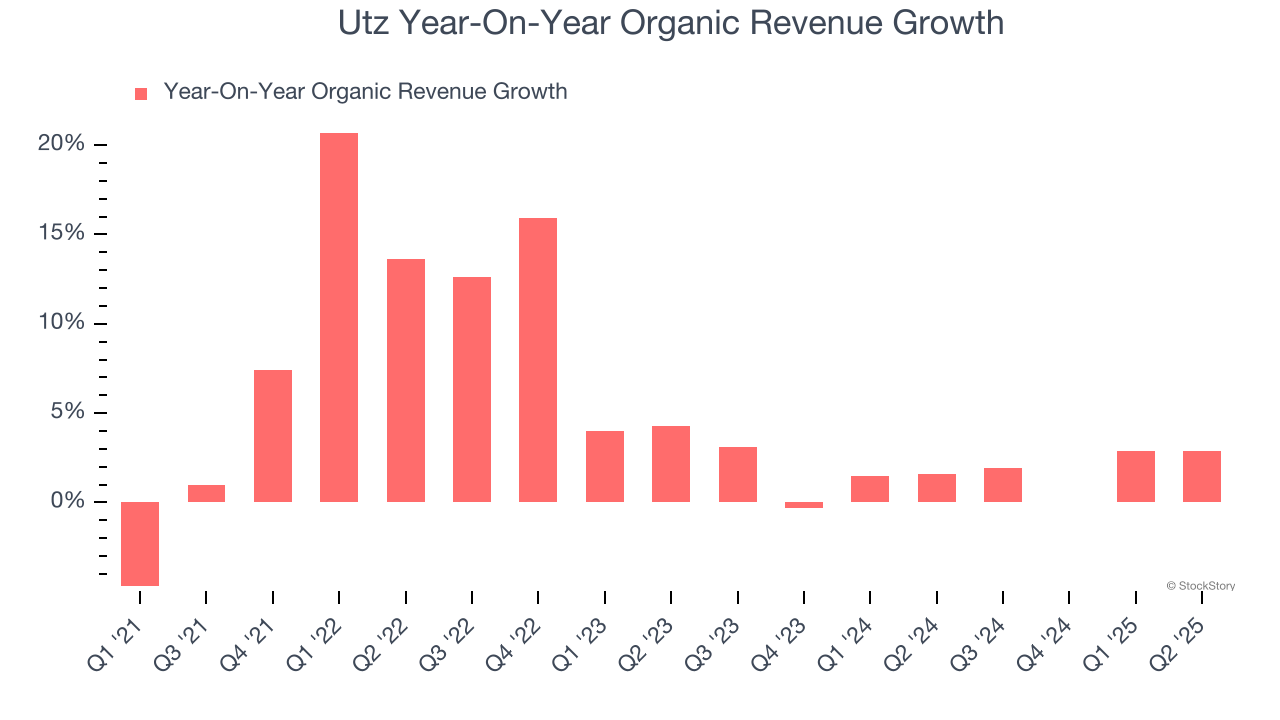
Snack food company Utz Brands (NYSE: UTZ) reported Q2 CY2025 results topping the market’s revenue expectations, with sales up 3% year on year to $366.7 million. Its non-GAAP profit of $0.17 per share was 5.6% below analysts’ consensus estimates.
Is now the time to buy Utz? Find out by accessing our full research report, it’s free.
Utz (UTZ) Q2 CY2025 Highlights:
- Revenue: $366.7 million vs analyst estimates of $362.3 million (3% year-on-year growth, 1.2% beat)
- Adjusted EPS: $0.17 vs analyst expectations of $0.18 (5.6% miss)
- Adjusted EBITDA: $45.1 million vs analyst estimates of $49.55 million (12.3% margin, 9% miss)
- Operating Margin: 1.7%, down from 6.3% in the same quarter last year
- Free Cash Flow was -$10.59 million compared to -$15.26 million in the same quarter last year
- Organic Revenue rose 2.9% year on year (1.6% in the same quarter last year)
- Market Capitalization: $1.20 billion
“I am pleased with our strong performance in the second quarter, with Organic Net Sales growth of nearly 3%(1). Our Branded Salty Snacks portfolio is accelerating, with 5.4% growth in the quarter(1). We gained value and volume shares in both our Core and Expansion Geographies(3). Our proactive approach to cost management and operational excellence has enabled us to achieve significant Adjusted Gross Profit Margin expansion,” said Howard Friedman, Chief Executive Officer of Utz.
Company Overview
Tracing its roots back to 1921 when Bill and Salie Utz began making potato chips in their kitchen, Utz Brands (NYSE: UTZ) offers salty snacks such as potato chips, tortilla chips, pretzels, cheese snacks, and ready-to-eat popcorn, among others.
Revenue Growth
A company’s long-term performance is an indicator of its overall quality. Any business can put up a good quarter or two, but the best consistently grow over the long haul.
With $1.43 billion in revenue over the past 12 months, Utz is a small consumer staples company, which sometimes brings disadvantages compared to larger competitors benefiting from economies of scale and negotiating leverage with retailers.
As you can see below, Utz’s sales grew at a sluggish 3% compounded annual growth rate over the last three years, but to its credit, consumers bought more of its products.

This quarter, Utz reported modest year-on-year revenue growth of 3% but beat Wall Street’s estimates by 1.2%.
Looking ahead, sell-side analysts expect revenue to grow 1.9% over the next 12 months, similar to its three-year rate. This projection is underwhelming and suggests its products will face some demand challenges.
Unless you’ve been living under a rock, it should be obvious by now that generative AI is going to have a huge impact on how large corporations do business. While Nvidia and AMD are trading close to all-time highs, we prefer a lesser-known (but still profitable) stock benefiting from the rise of AI. Click here to access our free report one of our favorites growth stories.
Organic Revenue Growth
When analyzing revenue growth, we care most about organic revenue growth. This metric captures a business’s performance excluding one-time events such as mergers, acquisitions, and divestitures as well as foreign currency fluctuations.
The demand for Utz’s products has been stable over the last eight quarters but fell behind the broader sector. On average, the company has posted feeble year-on-year organic revenue growth of 1.7%. 
In the latest quarter, Utz’s organic sales rose by 2.9% year on year. This growth was an acceleration from its historical levels, which is always an encouraging sign.
Key Takeaways from Utz’s Q2 Results
It was encouraging to see Utz beat analysts’ organic revenue expectations this quarter. We were also happy its revenue narrowly outperformed Wall Street’s estimates. On the other hand, its EBITDA missed and its gross margin fell short of Wall Street’s estimates. Overall, this quarter could have been better. The stock traded down 10.3% to $12.51 immediately after reporting.
Utz may have had a tough quarter, but does that actually create an opportunity to invest right now? If you’re making that decision, you should consider the bigger picture of valuation, business qualities, as well as the latest earnings. We cover that in our actionable full research report which you can read here, it’s free.





